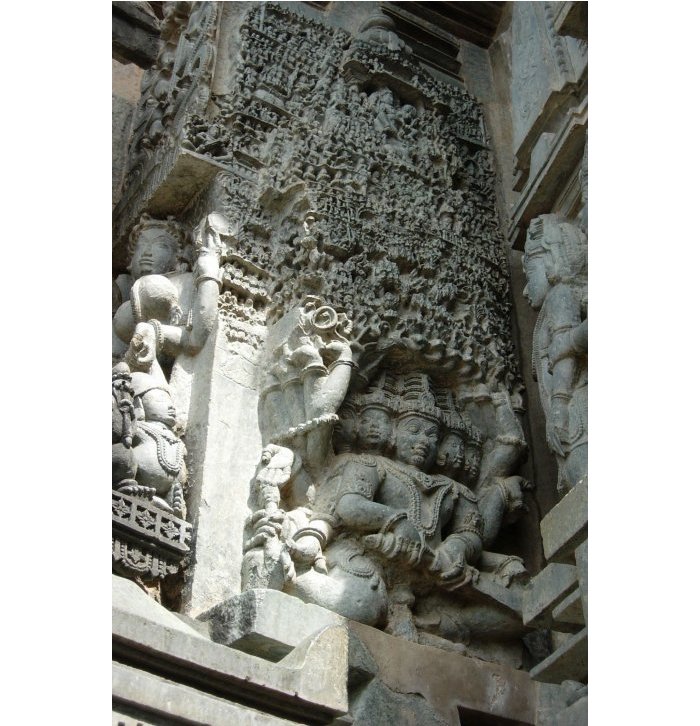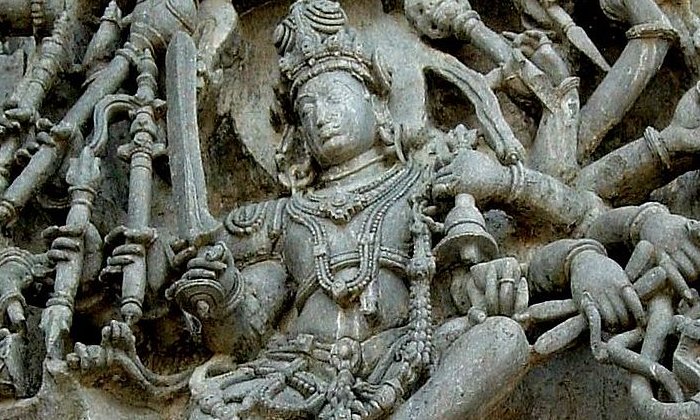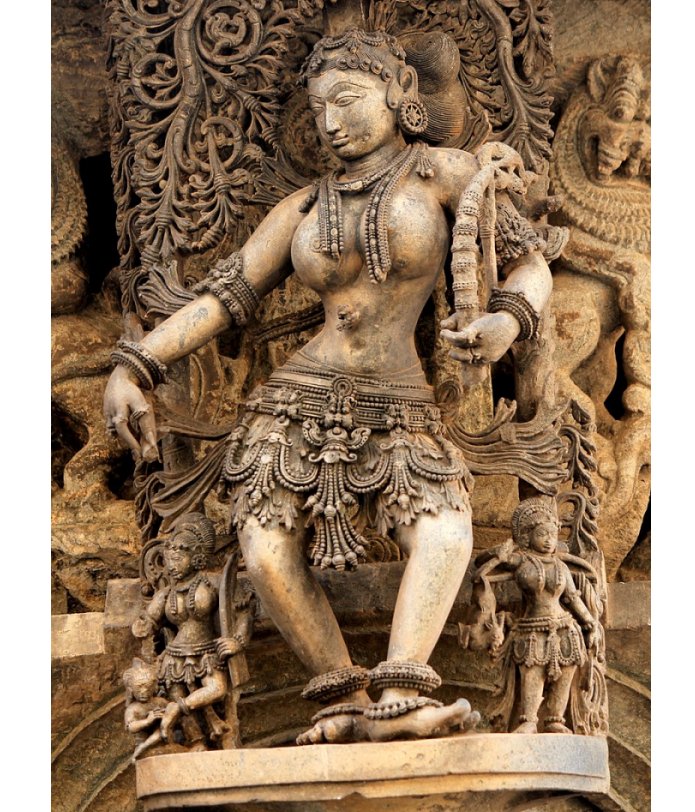Chennakeshava Temple In Belur Is Richly Decorated With Scenes From Ramayana Mahabharata And Puranas
A. Sutherland - AncientPages.com - This beautiful temple can be found in Belur, situated on river Yagachi, 38 km from Hassan district of Karnataka state, India. Once in the past, Belur was the capital of the Hoysala Empire.
Relief depicting demon king Ravana balancing the world in Chennakesava Temple Belur. Credit: CC BY-SA 3.0 CC BY-SA 3.0
The Hoysala artistry is famous for their skilled artists, noted for their sculptural details; the artwork seems to be alive with all fascinating themes from the Hindu epics and deities and motifs, like Yali kirtimukha (gargoyles), miniature decorative towers on pilaster, Makara (aquatic monster), birds, animals such as lions, elephants, and horses.
Belur is an old place with a long history and is renowned for its Chennakeshava temple, one of the finest examples of Hoysala craft. The temple was consecrated by the famous Hoysala king Vishnuvardhana to mark his victories in 1116 AD against the Cholas and called the Vijaya Narayana. Vishnuvardhana was not only a skilled warrior, ambitious monarch but also a great builder.
The Chennakesava temple's work of art in stone is of high quality. The builders used soft soapstone to create all those beautiful and intricate carvings. The temple is enclosed by the so-called prakara (an outer part around the Hindu temple sanctum) with a gopura (the entrance gateway to a Hindu temple enclosure).
Gajasurasamhara: Shiva slaying the demon Gajasura, Chennakesava temple, Belur. Image credit: Sarvagnya - CC BY-SA 3.0
The temple represents the Vijayanagar style, stands on a platform, and looks like an enormous casket. The Chennakeshava temple is dedicated to the Hindu god Vishnu. It represents the Vijayanagar style and is a masterpiece of Hindu fine artisans and skilled builders.
Since its founding, this sacred structure has been described in medieval Hindu texts and remains an important pilgrimage site in Vaishnavism, one of the significant Hindu denominations along with Shaivism, Shaktism, and Smartism. Vaishnavism represents a tradition commonly understood as a branch of Hinduism, which holds reverence and devotion for Vishnu or Krishna as the highest manifestation of divinity and the source of all existence.
The temple is remarkable for its architecture, sculptures, reliefs, friezes, iconography, inscriptions, and history.
This massive Hindu structure was built over three generations, and it took 103 years to finish it. It was repeatedly destroyed, looted during wars, and each time it happened, there was always enough time to rebuild it and repair the damage.
Statues on capital support the temple eaves. 38 of the original 40 have survived in Belur. Image credit: Goutam1962 - CC BY-SA 4.0
In the Chennakeshava temple, there is priceless artwork that illustrates scenes of the 12th-century secular life, all accompanied by dancers and musicians. A unique feature of the temple's interior is a series of Hindu texts such as the Ramayana, the Mahabharata, and the Puranas, all recorded on numerous friezes.
Unique creations left by skilled Hindu artists are madanakai figures standing on the capitals of the supporting pillars. Initially, there were 40 of them but survived 38 these figures in damaged or good form.
Two of them are Durga, three huntresses (equipped with bow), others represent dancers, musicians, women dressing or doing make-up, a woman with a pet parrot. Most of the madanakai (in graceful dancing poses) are carved into miniatures that decorate the temple's outer wall.
Some of the statues show some extraordinary artistic details. One figure, for example, is shown with a fruit tree canopy, where a small fly is shown sitting on the fruit, and nearby a lizard is preparing to pounce on the fly. In another carving, an eagle is attacking a sarabha (a part-lion and part-bird beast in Hindu mythology), which in turn is attacking a lion. The latter one is busy with pouncing on an elephant, seizing a snake, which in turn is swallowing a rat.
The Chennakeshava Temple is a Vaishnava temple, of which interior is closely associated with many themes originated from both Shaktism and Shaivism, as well from Jainism and Buddhism.
Written by – A. Sutherland - AncientPages.com Senior Staff Writer
Copyright © AncientPages.com All rights reserved. This material may not be published, broadcast, rewritten or redistributed in whole or part without the express written permission of AncientPages.com
More From Ancient Pages
-
 Ancient Feneos excavations: defensive walls, five towers, sanctuary unearthed
Civilizations | Aug 23, 2015
Ancient Feneos excavations: defensive walls, five towers, sanctuary unearthed
Civilizations | Aug 23, 2015 -
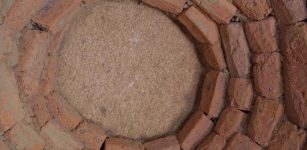 Smallest Ancient Thracian Brick Tomb – Discovered In Bulgaria
Archaeology | Oct 6, 2018
Smallest Ancient Thracian Brick Tomb – Discovered In Bulgaria
Archaeology | Oct 6, 2018 -
 Mystery Of The Lost Continent Destroyed By An Ancient Cataclysm – Wars Between The ‘Yellow Men And Black’ Men – Part 1
Ancient Mysteries | Aug 10, 2021
Mystery Of The Lost Continent Destroyed By An Ancient Cataclysm – Wars Between The ‘Yellow Men And Black’ Men – Part 1
Ancient Mysteries | Aug 10, 2021 -
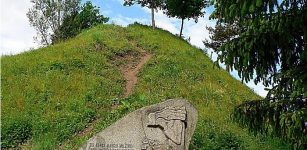 On This Day In History: 4000 Defenders Of Pilėnai Commit Mass Suicide When Attacked By Teutonic Knights – On Feb 25, 1336
News | Feb 25, 2017
On This Day In History: 4000 Defenders Of Pilėnai Commit Mass Suicide When Attacked By Teutonic Knights – On Feb 25, 1336
News | Feb 25, 2017 -
 Spread Of Early Farming Across Atlantic Coast Of Europe – In New Light
Archaeology | Apr 27, 2020
Spread Of Early Farming Across Atlantic Coast Of Europe – In New Light
Archaeology | Apr 27, 2020 -
 Is North America’s Oldest House In Ohio A 12,250-Year-Old Clovis Dwelling? Archaeologists Re-Investigate The Paleo Crossing Site
Archaeology | Apr 28, 2022
Is North America’s Oldest House In Ohio A 12,250-Year-Old Clovis Dwelling? Archaeologists Re-Investigate The Paleo Crossing Site
Archaeology | Apr 28, 2022 -
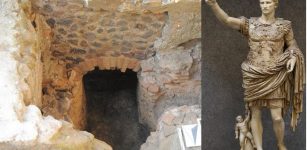 Lost Villa Of First Roman Emperor Augustus Found At Somma Vesuviana In Southern Italy
Archaeology | Apr 19, 2024
Lost Villa Of First Roman Emperor Augustus Found At Somma Vesuviana In Southern Italy
Archaeology | Apr 19, 2024 -
 Traces Of An Unknown Ancient Race Of Winged Beings And Other Mysterious Creatures Discovered In Japan
Ancient Mysteries | Nov 30, 2018
Traces Of An Unknown Ancient Race Of Winged Beings And Other Mysterious Creatures Discovered In Japan
Ancient Mysteries | Nov 30, 2018 -
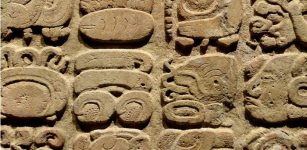 On This Day In History: Spanish Priest Diego de Landa Burned The Sacred Books Of Maya – On July 12, 1562
News | Jul 12, 2016
On This Day In History: Spanish Priest Diego de Landa Burned The Sacred Books Of Maya – On July 12, 1562
News | Jul 12, 2016 -
 Is Mysterious Pokaini Forest An Ancient Healing Center And Anomalous Zone?
Featured Stories | Aug 13, 2018
Is Mysterious Pokaini Forest An Ancient Healing Center And Anomalous Zone?
Featured Stories | Aug 13, 2018 -
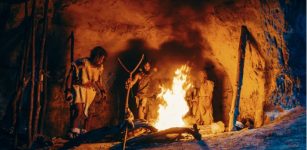 Neanderthals And Homo Sapiens Invented Different Fire Techniques – Evolution Of Human Cognition
Archaeology | Jun 1, 2023
Neanderthals And Homo Sapiens Invented Different Fire Techniques – Evolution Of Human Cognition
Archaeology | Jun 1, 2023 -
 Why Human Languages Can Be Likened To Branches On A Tree And Help Finding A Single Common Ancestor
Linguistic Discoveries | Sep 11, 2021
Why Human Languages Can Be Likened To Branches On A Tree And Help Finding A Single Common Ancestor
Linguistic Discoveries | Sep 11, 2021 -
 Surprising Evidence Of 12,000-Year-Old Unknown Advanced Secret Knowledge Held By Elite Individuals – The Connection – Part 2
Ancient Mysteries | Feb 7, 2021
Surprising Evidence Of 12,000-Year-Old Unknown Advanced Secret Knowledge Held By Elite Individuals – The Connection – Part 2
Ancient Mysteries | Feb 7, 2021 -
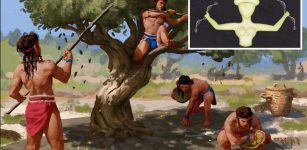 Ancient DNA Reveals “Completely Unexpected” Marriage Rules In Minoan Crete
Archaeology | Jan 16, 2023
Ancient DNA Reveals “Completely Unexpected” Marriage Rules In Minoan Crete
Archaeology | Jan 16, 2023 -
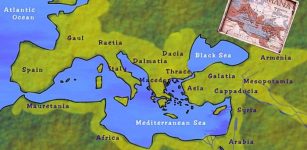 Dark And Light Sides Of Pax Romana: Great Political Slogan Introduced After Civil Wars
Ancient History Facts | May 20, 2023
Dark And Light Sides Of Pax Romana: Great Political Slogan Introduced After Civil Wars
Ancient History Facts | May 20, 2023 -
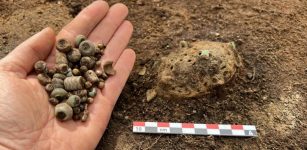 Amazing Artifacts Found In Viking Double Grave In Norwegian Garden
Archaeology | Jul 10, 2023
Amazing Artifacts Found In Viking Double Grave In Norwegian Garden
Archaeology | Jul 10, 2023 -
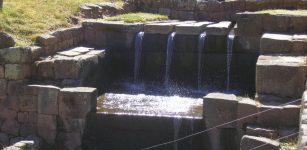 Tipón (Tipon): Who Taught The Inca How To Build Artificially Irrigated Garden?
Ancient Technology | May 1, 2019
Tipón (Tipon): Who Taught The Inca How To Build Artificially Irrigated Garden?
Ancient Technology | May 1, 2019 -
 11,000-Year-Old Human Remains Found At Heaning Wood Bone Cave In Britain
Archaeology | Jan 25, 2023
11,000-Year-Old Human Remains Found At Heaning Wood Bone Cave In Britain
Archaeology | Jan 25, 2023 -
 Gengen Wer – Goose God Who Guarded The Celestial Egg Containing The Life Force In Egyptian Beliefs
Featured Stories | Apr 22, 2021
Gengen Wer – Goose God Who Guarded The Celestial Egg Containing The Life Force In Egyptian Beliefs
Featured Stories | Apr 22, 2021 -
 ‘Saimaluu-Tash’ Time Capsule: Largest Millennia-Old Collection Of Petroglyphs In Central Asia
Civilizations | Nov 20, 2018
‘Saimaluu-Tash’ Time Capsule: Largest Millennia-Old Collection Of Petroglyphs In Central Asia
Civilizations | Nov 20, 2018

